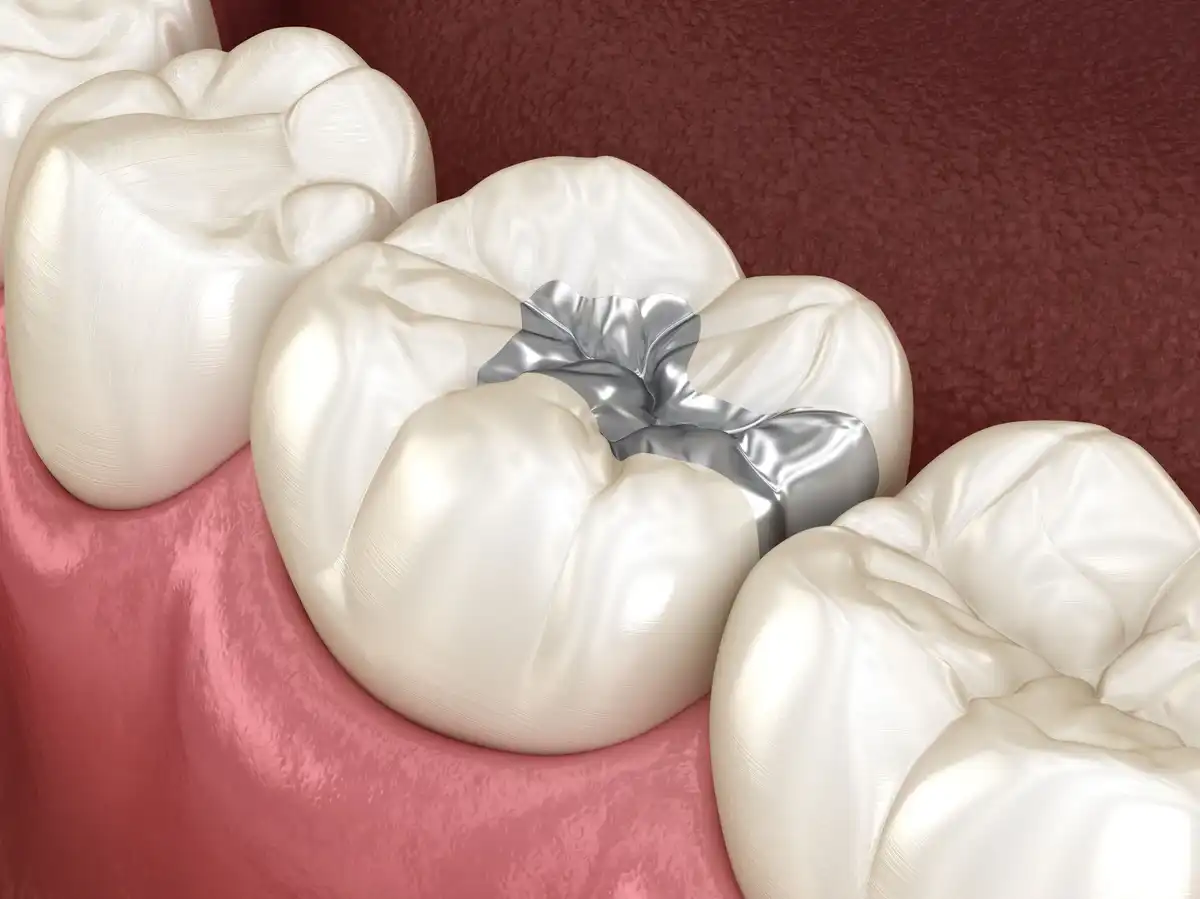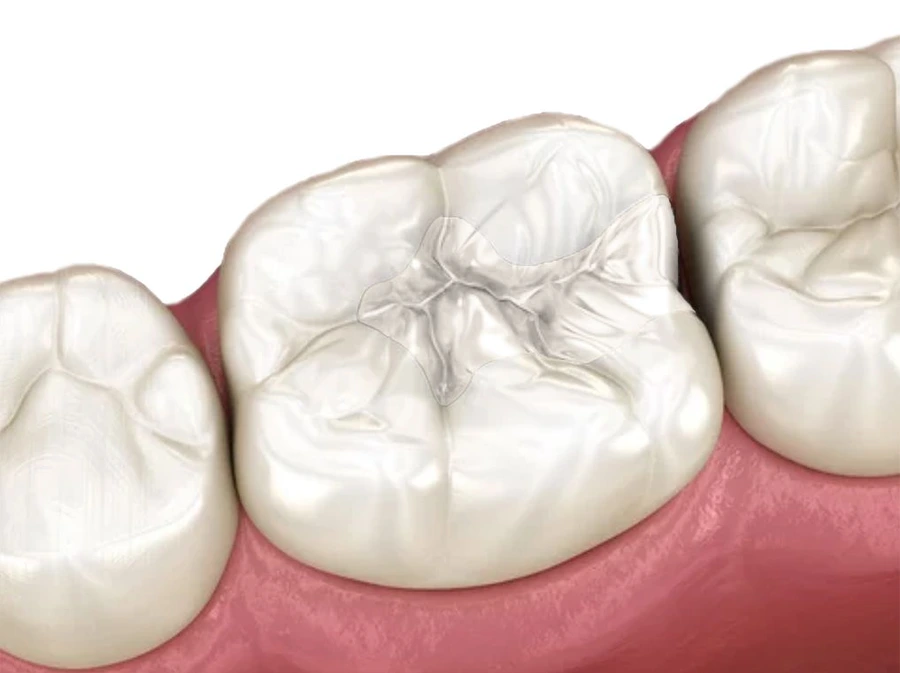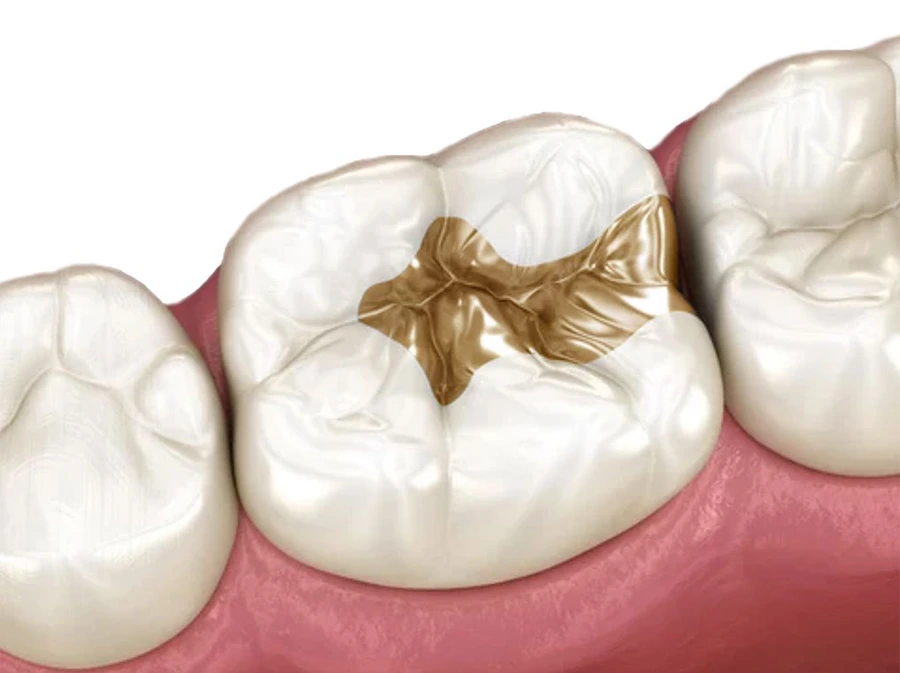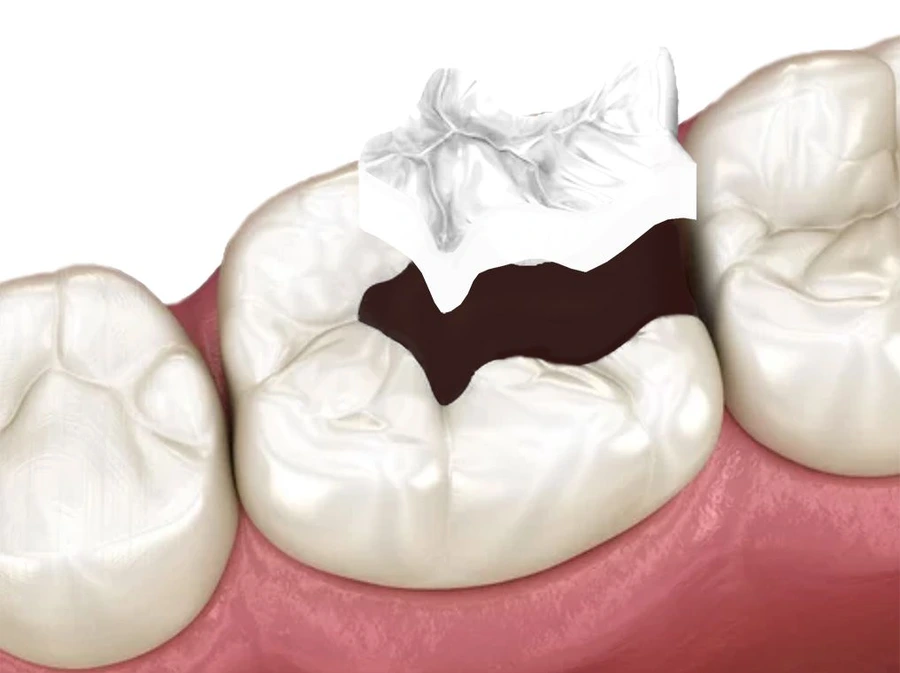How Much Does a Fillings Cost With & Without Insurance


Have a cavity? Wondering how much are dental fillings near you? How much dental fillings cost ultimately depends on a few different factors. But understanding which variables at play can at least keep you from getting caught off guard by a surprise bill in the mail later on.
What Are Dental Fillings?
Dental fillings are your first line of restorative defense against tooth decay. A cavity filling is essentially a patch or rebuilt area inside of your tooth where a cavity developed. The material of dental fillings is pliable, so your dentist can shape it to specific areas throughout your mouth.
Modern fillings can be made out of various materials. Most are shaped by hand and placed directly inside of your tooth at the time of the appointment. Others are lab-made fillings that your dentist will take an impression for, send it to the lab, then place a couple of weeks later.
Why Would You Need A Dental Filling?
If you have a small to medium-sized cavity, you need a dental filling. However, dental fillings costs can vary depending on the size of the restoration. So, the sooner your dentist diagnoses a cavity, the quicker you want to have it treated.
Fillings are specifically for treating tooth decay. Common symptoms include:
- Tooth sensitivity
- Tenderness to sweets
- Occasional sharp jolts or zings coming from a tooth
- Discomfort when biting down
- Tooth throbbing or pain
Cost Of Dental Fillings With No Insurance
The best way to save on dental care is by being prepared. 1Dental saving plan can help reduce costs by up to 75% off dental fillings.
1Dental offers 75% OFF the cost of dental fillings get a plan here today and save!
Types Of Dental Filling Costs
If you ask your dentist’s office, “How much are cavity fillings?”, they’ll probably reply with, “Which type?” The materials your filling is made from will directly impact the cost of the procedure and even how much your dental insurance will cover. Depending on market prices, some dental filling materials constantly adjust due to supply and demand.
The smaller the cavity, the smaller the filling, resulting in a lower filling costs.
| Filling Type | No Insurance Cost | with Dental Savings Plan |
|---|---|---|
| Silver amalgam | $50 to $300 | $11.50 to $75 |
| Composite resin | $90 to $450 | $22.50 to $122.50 |
| Gold filling | $250 to $2,000 | $62.50 to $500 |
| Porcelain inlay/onlay | $300 to $4,500 | $75 to $1,125 |
1Dental offers 75% OFF the cost of dental fillings get a plan here today and save!
Silver Amalgam Fillings

Cost without insurance: $50 to $300
In almost every case, silver fillings are the most affordable type of filling available. Filling without insurance for one or two surfaces, silver fillings generally cost $50 to $150. For three or more surfaces, the typical cost is $120 to $300 or more.
The percentage that insurance will pay for is usually higher than other types of filling materials.
Composite Dental Filling Costs

Cost without insurance: $90 to $450
White composite fillings are the second most common type of dental filling. Filling without insurance for one or two surfaces, tooth-colored composite fillings generally cost $90 to $250. For three or more surfaces, the typical cost is $150 to $450 or more. These fillings cost a little more than silver fillings. However, the price of white fillings has significantly come down over the past several years. It may not be much of a difference paying for white fillings with dental insurance compared to older silver options.
With a white filling, you’re able to restore any tooth in your smile without the restoration being visible. This aesthetic perk alone can make white dental fillings cost well worth the slightly larger investment. Plus, composite bonds closely to your tooth, which keeps the restoration as minimally invasive as possible.
Gold Fillings Costs

Cost without insurance: $250 to $2,000
Gold dental fillings are usually lab-made versions. Also known as “inlays” and “onlays” or “three-quarter crowns.” As a larger lab-made restoration, gold fillings are durable and pliable for areas of more aggressive tooth decay. They’re a nice go-between between a smaller dental filling and a full-coverage crown. However, how much are dental fillings when they’re gold? That’s a great question. It can be higher one month and lower another, depending on current market values. But they will definitely cost more than a silver or composite filling does.
Porcelain Fillings Costs

Cost without insurance: $300 to $4,500
White dental fillings are not the same thing as porcelain fillings. A porcelain filling is lab-made (inlay/onlay) similar to a crown. Because of the additional steps required in making and placing them, it increases lab-made dental fillings cost.
Plus, there’s the matter of the materials used. Not all porcelains and ceramics are the same. Some are crafted from highly dense zirconia. Others are custom-milled CEREC treatments. The type of materials necessary directly impacts the overall cost of the procedure.
Additional Cavity Filling Costs
Let’s say you’re getting a small, affordable white or silver filling. Are there other costs that can affect the cost of treatment? Absolutely.
1) Additional Procedures
| Procedure | Average Cost |
|---|---|
| Dental exam | $50-$150 |
| Dental X-rays | $10-$250 |
| Local anesthetic | $60-$500 |
2) Cost Of Living In Your Area
If you’re in a location with higher rent and housing, the dental fees will reflect that.
3) If You’re Getting Sedation
Want to sleep through a dental filling appointment? The extra fee will add to your overall cost. Sedation comes in different levels, so pricing will as well.
4) Your Insurance Coverage
Some plans pay up to a specific amount, regardless of the type of filling you’re getting. If you want to pay a little more for a white or porcelain one, that’s your call to make.
5) The Number Of Tooth Surfaces Involved
Single-surface dental fillings cost more than two or three-surface fillings do. If you have a cavity between your teeth, your dentist will need to go through the top of the tooth to get to it, meaning your restoration will be a two-surface filling. If it’s only on the chewing surface, it will only be one surface.
Are Dental Fillings Covered By Insurance?
As a general rule, dental fillings are usually covered by most dental insurance plans. However, your plan can dictate the type of filling covered and how much money your insurance plan will pay for every year. If you only need one of two fillings, you may only spend a couple of hundred dollars (more or less) but if you need fillings throughout your entire mouth, you could easily max out your insurance benefits.
A typical dental filling is usually covered by about 80%. The level of coverage depends on your policy, of course. It’s up to you or your employer (whoever initially enrolled in the plan) to select the levels of coverage you receive. These vary with each company, so one insurance carrier is not necessarily always better than another.
If you have a deductible to meet, you’ll have to pay up to that amount before your insurance pays for your filling. Theoretically, even if your plan covers 80% of a filling, you might still be paying for 50% or more of it yourself, depending on your deductible.
To find out exactly how much are dental fillings going to cost in your situation, get a customized care plan from your dentist. The insurance and treatment coordinator will tabulate your coverage, incorporate it into the treatment plan, and be able to show you a line-by-line estimate of your expected fees and financial responsibilities. It does sometimes seem like rocket science, but your dental team is there to help!
The best way to save on dental care is by being prepared. Dental saving plans can help reduce costs by up to 60% off dental fillings.
The Cheapest Way To Get Dental Fillings
Is there a cheaper way to afford tooth fillings? Absolutely.
Dental Savings Plans
Dental discount plans are great for families or individuals that are looking to save 10% to 60% on the average cost of dental care. Dental plans are nationwide with over 100,000 dentists in the program, see if you can save with a dentist near you.
Dental Schools
An easy way to cut your dental bills in less than half is to head straight to your nearest dental school. Dental schools provide amazing, high-quality treatment performed by the more experienced dental students and always under the oversight of a supervising professor dentist. The results are impeccable, the costs are low, but there is one downside: you’ll be spending way more time waiting. After all, they do need to be checked and graded on their work!
Payment Plans
It’s pretty common for people to use payment plans to pay for dental work like cavity fillings. Especially since most insurance carriers haven’t adjusted their benefits to the average cost of living in, oh, over 40 years. And these days a lot of people don’t have dental insurance, period. With a payment plan you can usually get 0% or low interest and immediate approval, then make low monthly payments on the balance of your filling. That way you can schedule treatment right away, even if it’s not in your emergency budget.
Treating The Cavity ASAP
The earlier you treat an area of tooth decay, the more affordable the procedure is going to be. The price of a small filling today could easily evolve into hundreds or thousands of dollars more in treatment several months down the road. Just because a tooth doesn’t hurt doesn’t mean you can put treatment off. It will ultimately come back and haunt you. It’s better to finance a small dental filling ASAP than it is to worry about the price of a root canal and crown that will cost way more.
Community Dental Clinics
Most communities will have a full-time or pop-up community dental clinic that offers charity work for people who qualify. The requirements vary depending on which clinic you visit. Most only provide basic services like dental cleanings, exams, and tooh extractions. Some may offer smaller dental fillings too.
Alternative To A Dental Filling
Maybe you’re not convinced that you need a dental filling just yet. If that’s the case, consider the following:
1) Get A Second Opinion
Is your new dentist over-reacting to a lesion on a tooth? If you feel uneasy about moving forward with treatment, do yourself a favor and at least go get a second opinion. If the second dentist affirms the situation, you know you need to take care of it.
2) Silver Diamine Fluoride
Although SDF can seriously stain teeth, it can help to arrest (stop) cavities in situations where a filling may not be appropriate. Such as in special needs patients or young children who might not be able to sit still without sedation, or are about to lose their teeth in a year or two.
3) Have Your Dentist Put A Watch On It
Is the lesion extremely small? Has it not yet broken through the outer layer of your tooth enamel? Your dentist may want to prescribe a fluoride gel for you to use and ask that you re-vamp your oral hygiene routine. They can check it at your next exam to see if the lesion has spread.
What To Expect From A Dental Filling Procedure
Getting a dental filling is one of the most basic types of dental treatment out there. If you’ve never had one, there’s nothing to worry about!
First, your dentist will gently numb your tooth. They’ll usually use some numbing gel before your injection to keep you as comfortable as possible. Once your tooth is numb, they’ll clean out the decayed and damaged tooth structures. Finally, they’ll prep the tooth surface left behind, then shape the filling material directly into your tooth. If it’s a lab-made filling, a second visit will be required.
You can expect the anesthetic to wear off within a few hours. In the meantime, try not to chew on anything (including your cheek or tongue!)
Do I Need A Root Canal?
If you wait too long to get a dental filling, it will almost always eventually spread into the nerve of your tooth. Once that happens, you’ll be wishing you had the lower dental fillings costs to worry about. By then, a root canal and dental crown will be your only option to save your tooth. Even if the decay starts to take up a larger area of your enamel and doesn’t rupture into the nerve, you’ll still need a dental crown, which costs hundreds of dollars more than a filling will.

Make your inbox smile!
Subscribe






